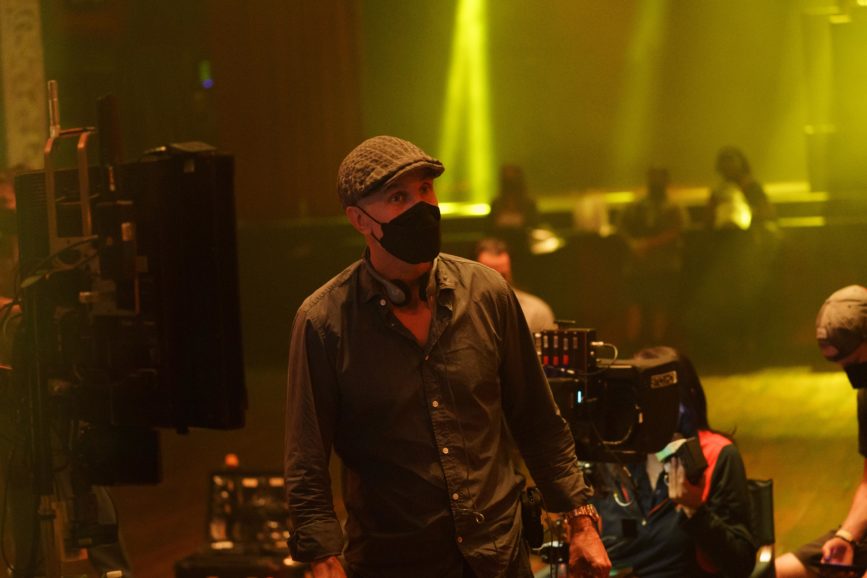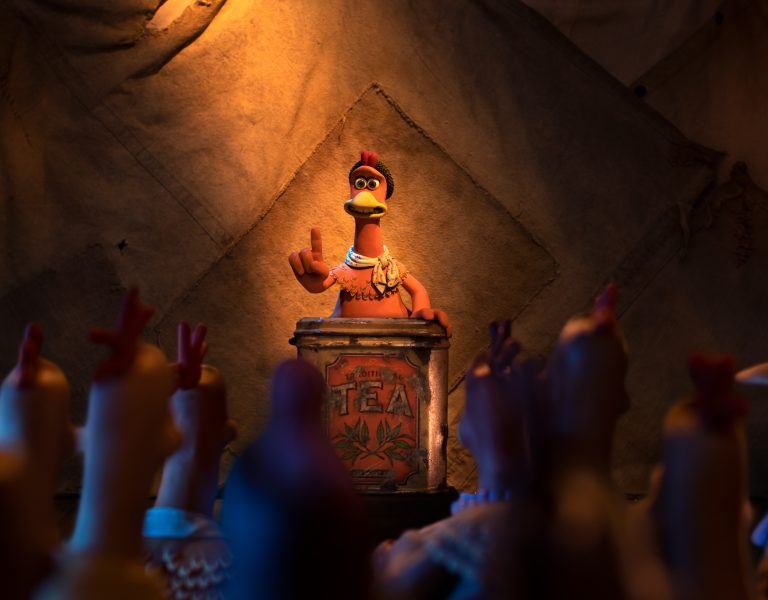FREE SPIRITS
Telling the wild story at the centre of Pam & Tommy saw cinematographer Paula Huidobro adopt a bold approach to realise director Craig Gillespie’s visual aspirations for the series in line with his desire to give the actors freedom, keep the camera moving, and be inventive in the use of focus.
“I always like to make a statement, if I can,” says Pam & Tommy director Craig Gillespie (I, Tonya, Lars and the Real Girl, Cruella) about his production approach. The ambition could not have been more apt when bringing to life on screen the story of a pair renowned for their vibrancy and boldness.
Based on true events, the simultaneously outrageous and heart-warming series chronicles the rollercoaster ride of love, loss, and betrayal experienced by actress Pamela Anderson (Lily James) and her husband, Mötley Crüe drummer Tommy Lee (Sebastian Stan). From their whirlwind romance – marrying in 1995 after knowing each other for a mere 96 hours – through to the sex tape that was stolen from the couple’s home by disgruntled contractor Rand (Seth Rogen), the show charts the celebrity couple’s highs and lows.
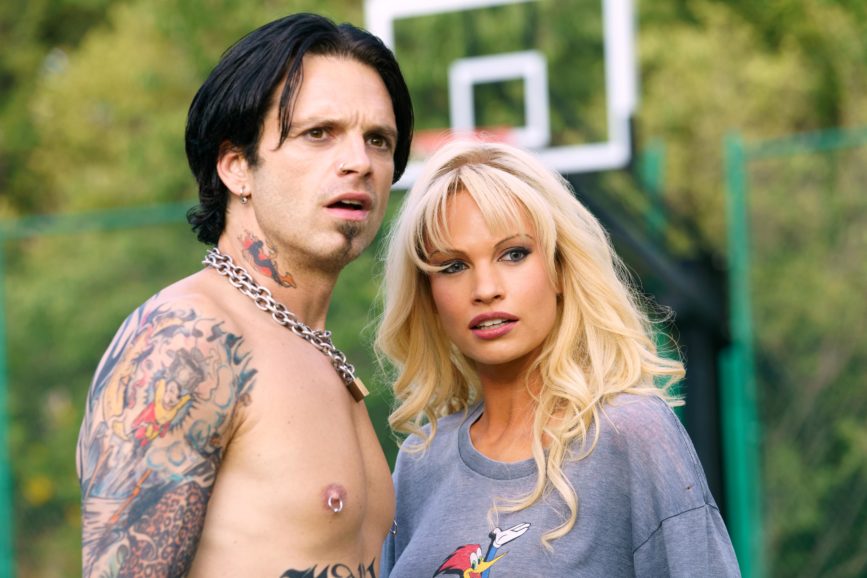

Cinematographer Paula Huidobro (CODA, Barry) was in tune with Gillespie’s vision and favoured way of working before shooting the biographical miniseries, having collaborated with the director on last year’s comedy-drama series Physical. Huidobro welcomed uniting once again because Gillespie has “great visual sensibility, is very aware of the light and sun position, and always pushes the crew to create something even better.”
While Gillespie, who directed three of the eight episodes, set the visual language for the show with Huidobro, when the directors at the helm for the other episodes – Lake Bell, Gwyneth Horder-Payton, and Hannah Fidell – introduced their own ideas, Huidobro remained “the keeper of the look”, ensuring the feel was consistent with what had initially been envisioned.
During prep, Huidobro sought inspiration from Mötley Crüe music videos, Pamela Anderson’s films such as Barbed Wire, pop culture of the period, and the “beautiful ugliness of the era”. Production designer Ethan Tobman (Room, Free Guy, Beautiful Boy) also helped recreate a ‘90s feel through period-accurate décor in spaces such as Pam and Tommy’s enormous house, which featured a vast atrium area allowing for much freedom of camera movement and a giant window which a Soft Sun shone through to illuminate the open space with diffused lighting.
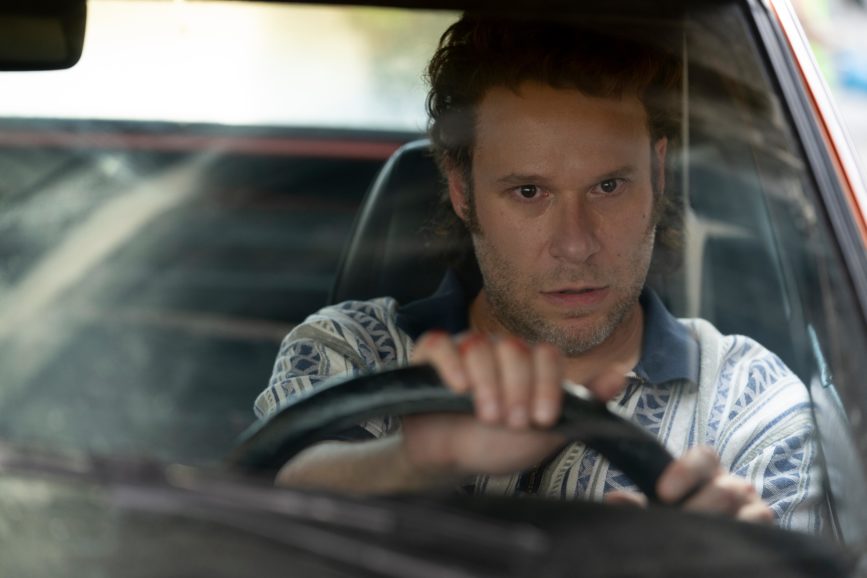
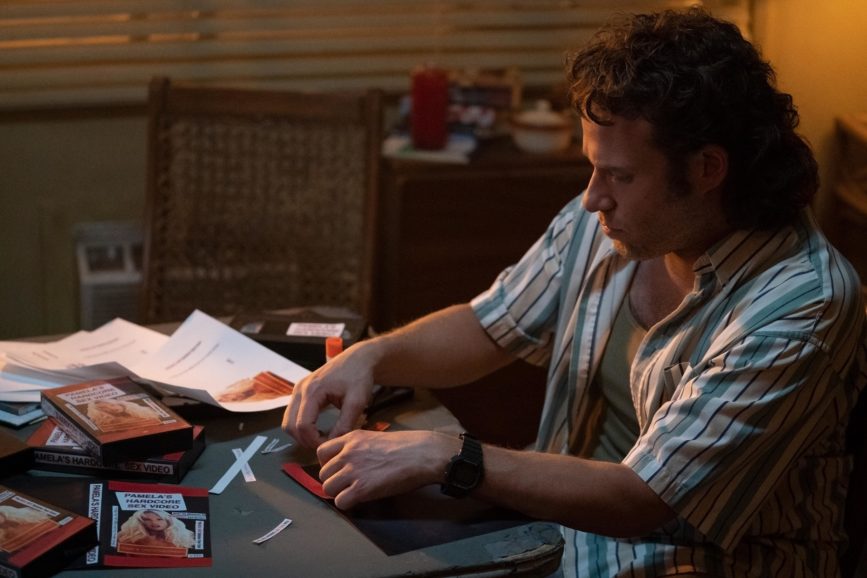
“We wanted to capture the perception of what the rock ‘n’ roll lifestyle was, so to serve the purpose of the story, their house in the series – which we found in Chatsworth, California and boasted an amazing atrium – was a little grander than it was in reality,” says Gillespie. “We then hand off from the actual location to the rest of the set – the living area, kitchen, and bedroom – which was built on stages at Chandler Valley Center Studios in Panorama City, California. Ethan did an amazing job of maintaining that scale and the juxtaposition between Pam and Tommy’s grandiose rock ‘n’ roll lifestyle and Rand’s life.”
Real locations included Tommy’s recording studio and the nightclubs, with environments such as Rand’s apartment built on stage and many external sequences shot in the San Fernando Valley. The production design approach was always rooted in “making the spaces look lived in” and whilst creating the period piece, Gillespie was mindful not to fall into cliches or his “interpretations of what that era was like”. Details such as the wardrobe or technology and electronics were used to indicate when the events took place, whilst being careful not to let them detract from the story.
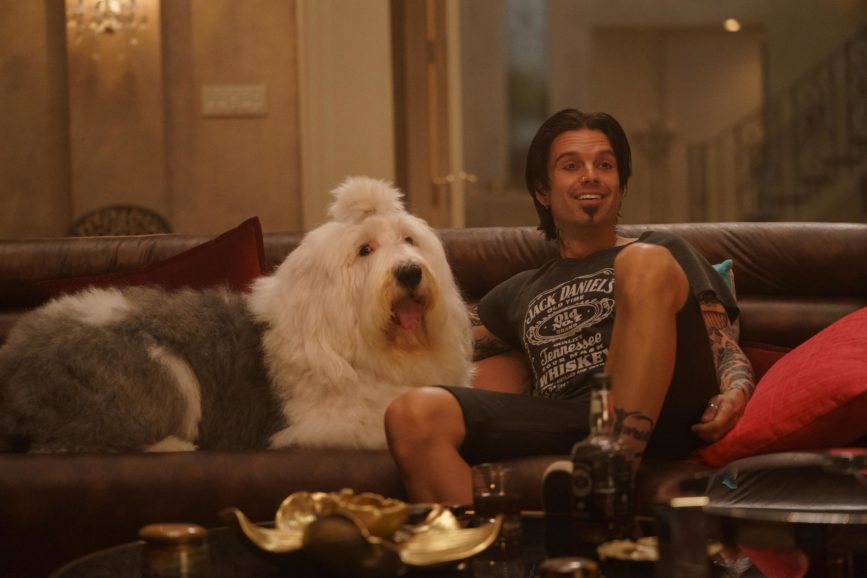
“You want it to be present, but not front and centre,” says Gillespie. “So, rather than the series screaming early ‘90s, it was always about making it feel like it’s part of that world, without detracting attention from the performances. This could be tricky because we were working with some pretty iconic ‘90s looks.”
Not all the narrative takes place in the mid-‘90s or in chronological order – the series is interspersed with backstory and scenes from the previous decade. “So, you have to give it a layered feeling and a sense that it is coming from two different worlds,” adds Gillespie. “When Ethan designed Rand’s apartment, the layering and eclectic mix of memorabilia on the shelves and on his kitchen counter were incredible. The detail really brought it to life. Once the bones of an environment have been created, it’s that layering that really brings it together.”
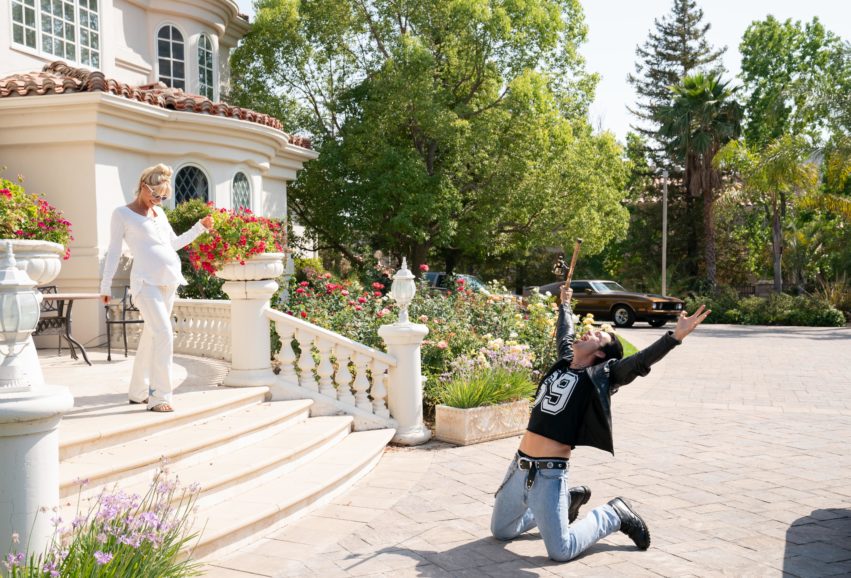
Liberation and courage
Giving the actors freedom was crucial for Gillespie, whilst striving to fulfil his ambition of making the audience feel immersed in every scene. “Craig doesn’t like to do a wide shot and then coverage. He wants to be on Steadicam, start on the wide shot and push in all the way to a close-up. And then it turns around into somebody else’s close-up, in a similar style to Cassavetes,” says Huidobro.
“The actors were even handed the camera to film themselves for the scenes that took place on the boat in Catalina. And as some of the sequences were very sexual and intimate, it was also important to respect that and give them space to feel comfortable.”
Gillespie’s desire to liberate the actors meant that quite often 360-degree shots were required. This meant shining sources through windows and making use of practicals “whilst having the courage to let it be a little messy.”
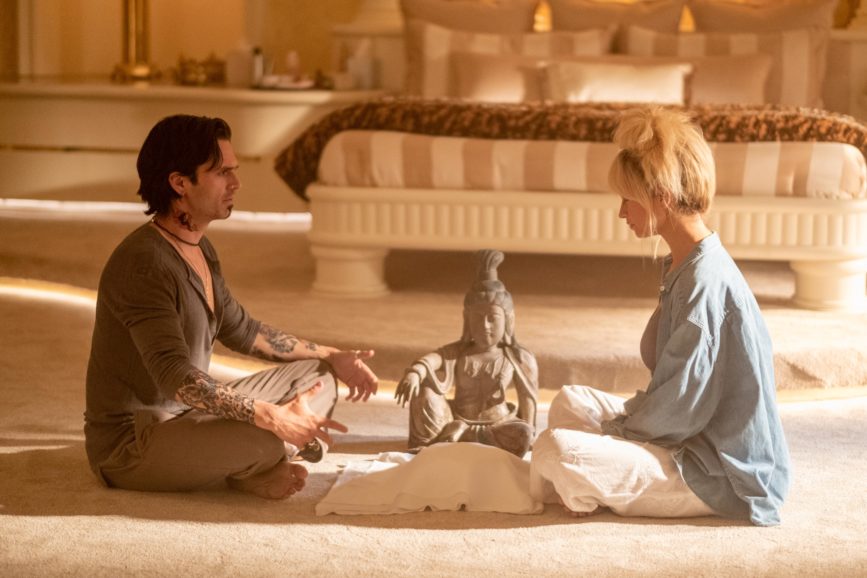
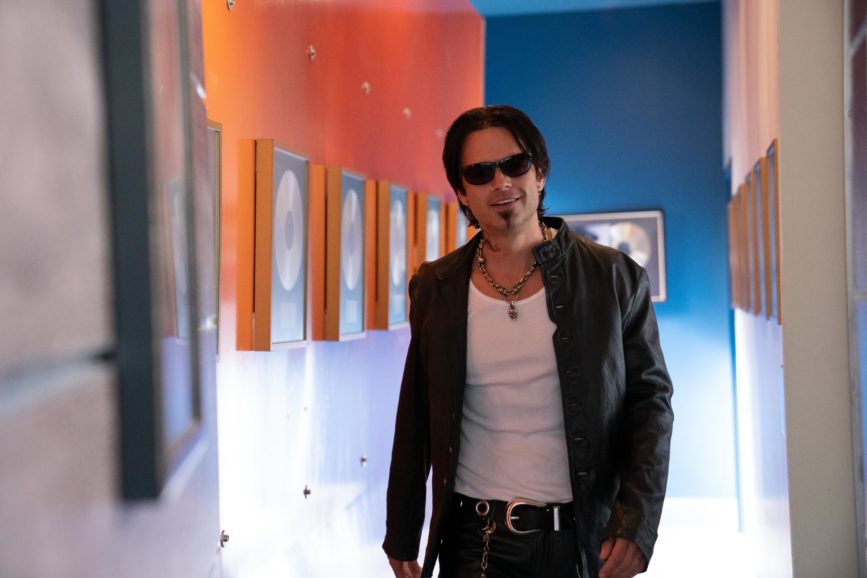
“I like to work very quickly, but I also like it to look good which is not usually the easiest combination,” he admits. “But Paula is incredibly fast and efficient while still creating a beautiful look. She’s also so great at keeping it simple, but still making the visuals have a strong point of view through the lighting.”
While Huidobro admits her style has tended towards being more traditional and subtle on some previous productions, she was keen to try new approaches and embrace the boldness of the role the camera played in Pam & Tommy. “The camera has a lot of independence, and it definitely has a distinctive style, so you notice the camerawork,” she says. “I also found the experience fun because you have to light the room rather than the specific shot. And then we always had a handheld light to help on the close-ups.”
Already an admirer of the look produced by the ARRI Alexa, Huidobro was confident it would be the best fit, opting for the Mini LF due to Gillespie’s preference to “live primarily on Steadicam”.
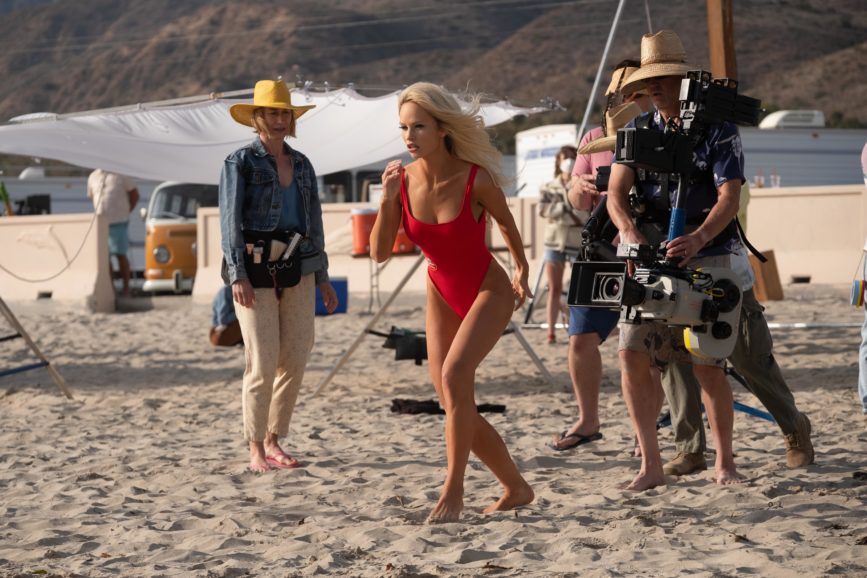
As when the events took place in the ‘90s, which was a film era, the director was keen to emulate a shot-on-film look. DP and director agreed that the quality of the Panavision B and T Series anamorphic lenses would help achieve this and suit the story being told. “They are soft, bloom a little, and fall off at the edges,” says Huidobro. “They have these amazing anamorphic bands too and we also used a lot of smoke to help enhance the look.”
But to accomplish Craig’s vision, featuring quick Steadicam push ins, modifications needed to be made to the lenses to allow for close focus. Huidobro wanted the characteristics of the B series, which were softer and flared more, as well as the closer focus the T-Series lenses offered. “Craig likes to push in really close to the actors, so Panavision’s Dan Sasaki adapted the lenses to suit his needs,” adds Huidobro.
Gillespie agrees the look “really started with those lenses and then we got into discussions about colour palette with production designer Ethan and the wardrobe department, with all departments working in synergy.”
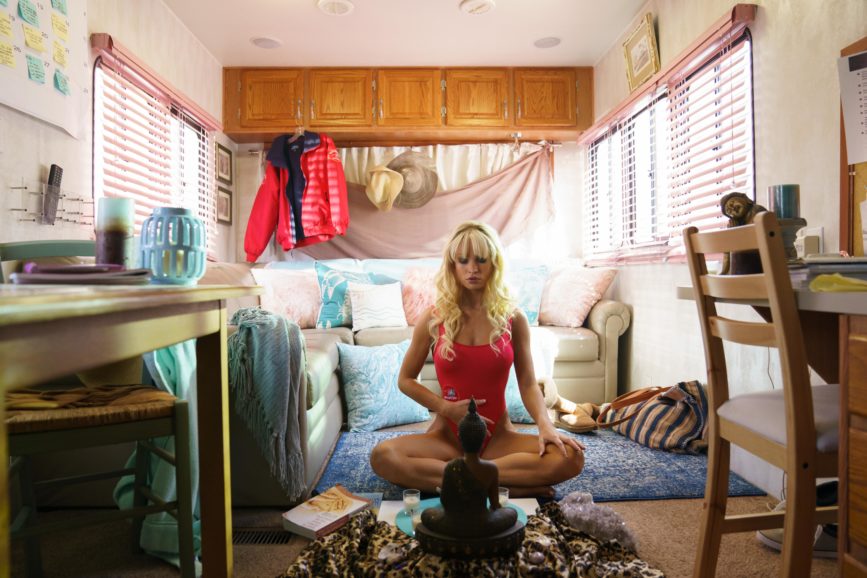
1st AC Naomi Villanueva – who had recently finished shooting Physical with Huidobro, using the same camera and anamorphic T Series and B Series – also helped Huidobro “dial in the look of the lenses” and overcame the challenges of constantly pushing minimum focus.
“With those modified lenses combined with the Tiffen Black Satin 2 diffusion filter, atmospheric smoke, and shooting at a T2.8, the look of the show was created as envisioned,” says Villanueva. “We shot almost the entire series with two main lenses – the T Series 40mm and 50mm. And as Craig likes to allow the actors space to accomplish what they want from a scene, we were always ready for anything, sometimes playing with the focus to help tell the story.”
As the show was mainly shot on Steadicam and featured constant camera movement, pulling of focus, and atmospheric smoke, Villanueva found it a demanding but rewarding experience. “The focus puller’s job, in my opinion, is one of the most stressful on set. But when it all comes together and you see the final product and a cool Steadicam shot with difficult moves and push ins, it feels great to say, ‘Wow, I was part of that.’”
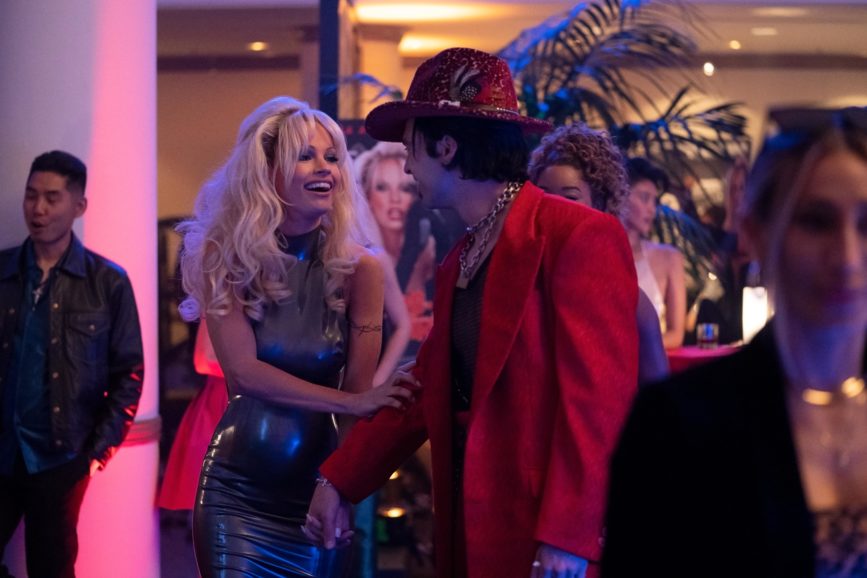
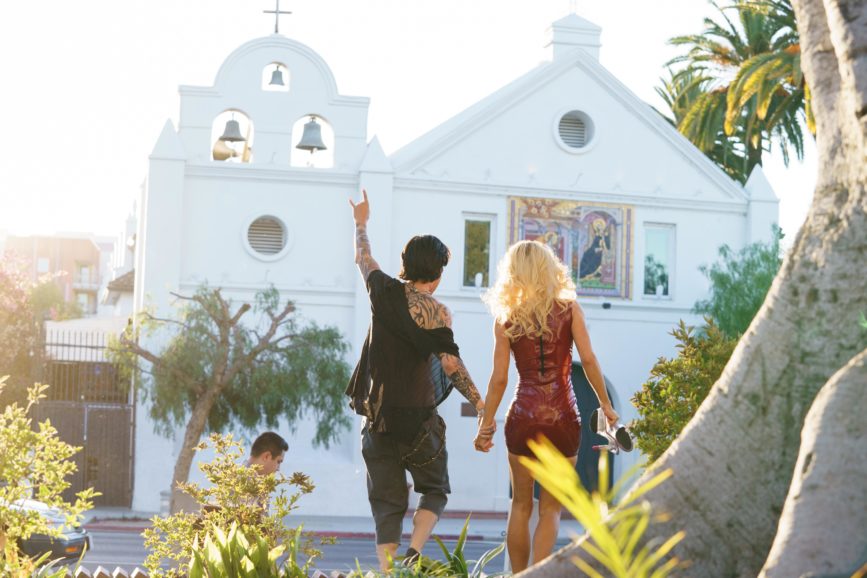
Prior to the shoot, test footage of the actors was captured which Company 3’s Tom Poole timed to create a LUT that would help produce the shot-on-film. “I didn’t have a DIT whilst filming, so we started from that point with the LUT and then Tom colour timed the whole thing which ended up being pretty close to what we had designed,” says Huidobro.
Gillespie also explored adding film grain with Poole, who he had collaborated with on productions such as I, Tonya and Cruella. “Tom’s aesthetic is so beautiful, and it was very appropriate we were going with a film look for this series,” says the director.
“You can shoot on film, like we did on I, Tonya which looked great. But Tom has developed such a sophisticated way of creating a LUT and adding film grain to produce a film look when shooting digitally that I can find it hard to tell the difference between what’s actually been shot on film. I was confident he could give us the look we needed, combined with all those highlights, imperfections, and blooms you get when starting with the foundation of the right lenses.”
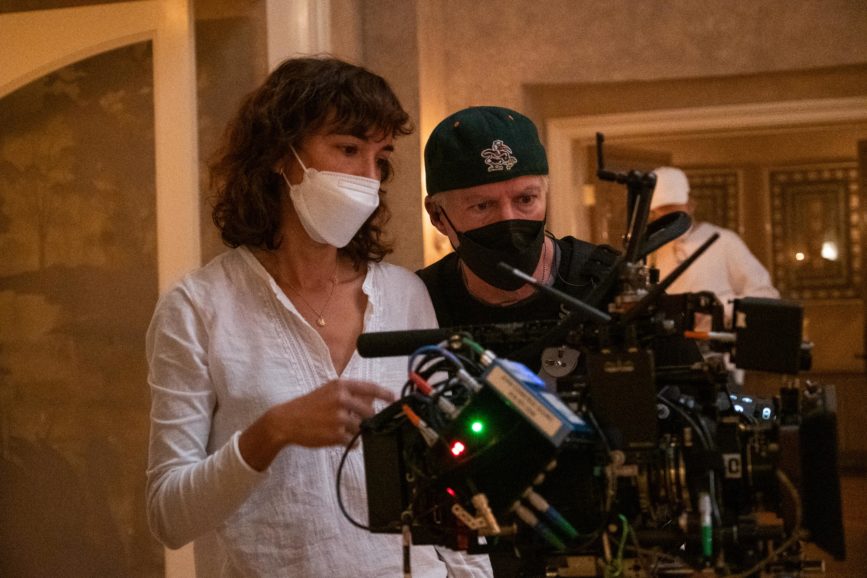
Bold choices
Huidobro, Gillespie, and the crew were in tune with the camera’s relationship to the story in every scene. “Paula and I have a very quick shorthand about what the camera is doing to help tell our story,” says Gillespie. “Is it going to be handheld? Does that suit the motivation of the characters? Are we going to go locked off?”
As Rand is alone in many of his scenes, the focus when shooting those was on how to get inside his head and state of mind. “In contrast, Pam and Tommy’s scenes were more dynamic as they were explosive in their personalities, so we wanted the camera to reflect that and have an energy,” adds Huidobro.
Having shot many features, series, and commercials featuring advanced storytelling techniques, Gillespie wanted to bring some of those into play in Pam & Tommy, suggesting body cam rigs and crane work be put to impactful use in sequences such as the club scene in episode two where the two protagonists first meet.
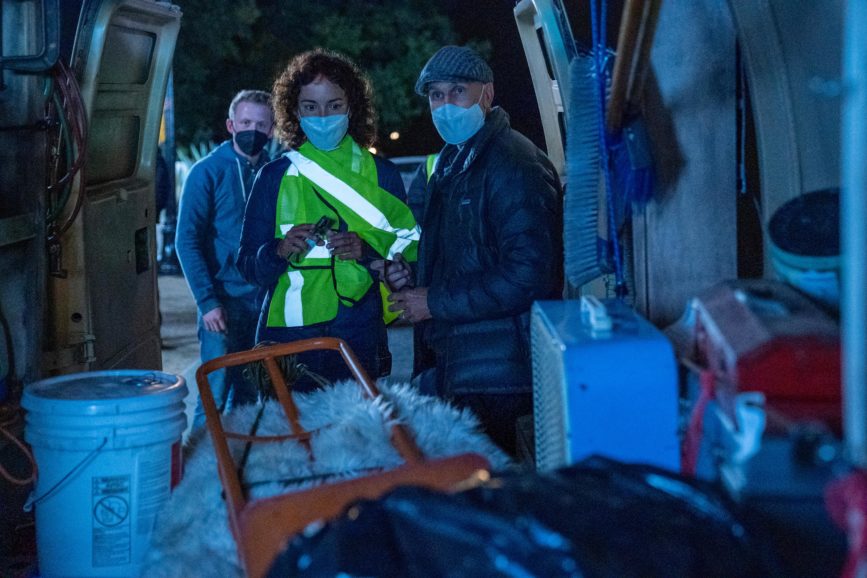
“We threw the whole kitchen sink in there in episode two, and it was really fun to just go with it and be fearless,” he says. “The studio was really supportive of pushing that envelope too, which is great.”
Huidobro also believes these techniques added to the experience: “We wanted it to be carefree and fun, like it would feel to be high in a club and crazy in love with someone. They were exciting and outrageous people, and we wanted the images to reflect that. We weren’t afraid to draw attention to the camera with some dynamic crane work, lots of push ins, and bold choices.”
Phantom high-speed cameras were introduced for the nightclub scenes and for later sequences in that episode shot in the hotel to create a freeze frame effect sex scene. “We used really low frame rates when Pam and Tommy were in the water and as they were also high on drugs, we wanted the images to be intense and disorientating,” says Huidobro.
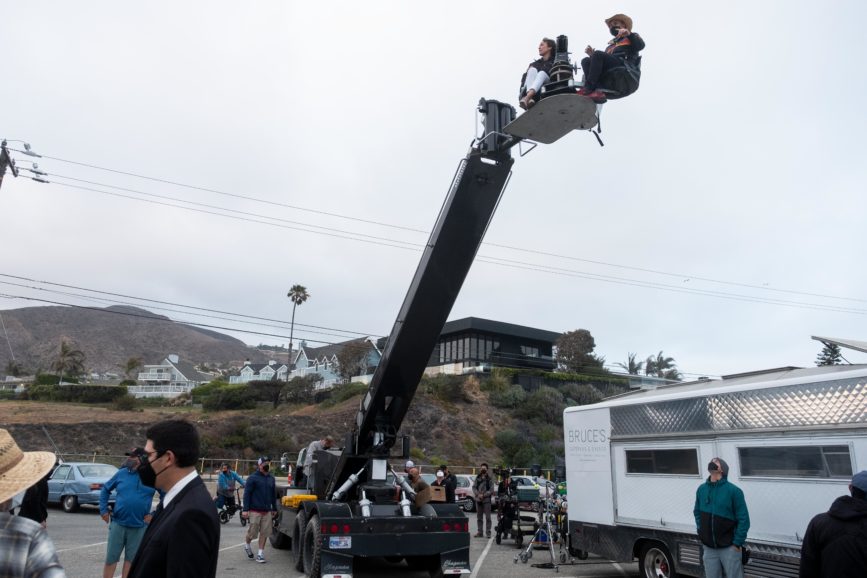
Rather than committing to specific blocking, sometimes the directors working on the other episodes would discover the scene as filming was taking place, with the actors exploring different options in each take. “Camera operator Mark Moore is amazing and almost danced with the actors, responding to new things every time until we nailed the blocking,” says Huidobro. “Using Steadicam for about 90% of the series and having a great operator and lighting the space wisely really gave the actors freedom to find the scene.”
Moore had just come from Physical¸ where Gillespie had implemented a similar use of Steadicam. “When shooting Pam & Tommy, Craig wanted to push the envelope a bit more and the constant camera movement – which became a character in the series – would help build the objective emotion, comedy, anger, love, and fear. The movement facilitated moving the story along at a quicker pace,” says Moore.
The series was shot using Moore’s “trusty and reliable” GPI Pro Systems sled which he has used for 25 years. “It is almost indestructible, and with that kind of usage, it had to be,” he says. “Other than the Pro rig, we used some remote heads on various sized Technocranes, the DJI Ronin 2 camera stabilisation system, and handheld cameras, but 98% of the shots were Steadicam shots with the Pro.”

Capturing an era
When shining a light on the story of Pam & Tommy, gaffer Tracy Estes and the rest of the crew’s goals were to capture the ‘90s era and use lighting to enhance the narrative. Estes commends Huidobro’s impressive vision when approaching a new project. “She’s an amazing collaborator when working with her lighting and grip crew and surrounded us with a top-level talent crew,” says the gaffer. “Key grip Paul Perkins and his grip crew were fantastic to work with. And we couldn’t have done this show without my incredible set lighting team and rigging gaffer Jimmy Lyons and his crew.”
Estes was also excited to work with Gillespie, whose vision of the show and the team he assembled to add to it was something the gaffer believes is the key to the series’ success. “Paula is also skilled at making each of the many sets look unique with our lighting and always utilises the practical fixtures on the set to create a realistic feel.”
With many locations and sets to light, it was essential to produce an organised lighting plan for each one. Primarily LED lighting units were used to light the actors in the interior locations and Astera Titan Tubes and Litegear Litemats were the go-to soft sources used whenever possible due to their versatility of colour options and wireless dimmer control.
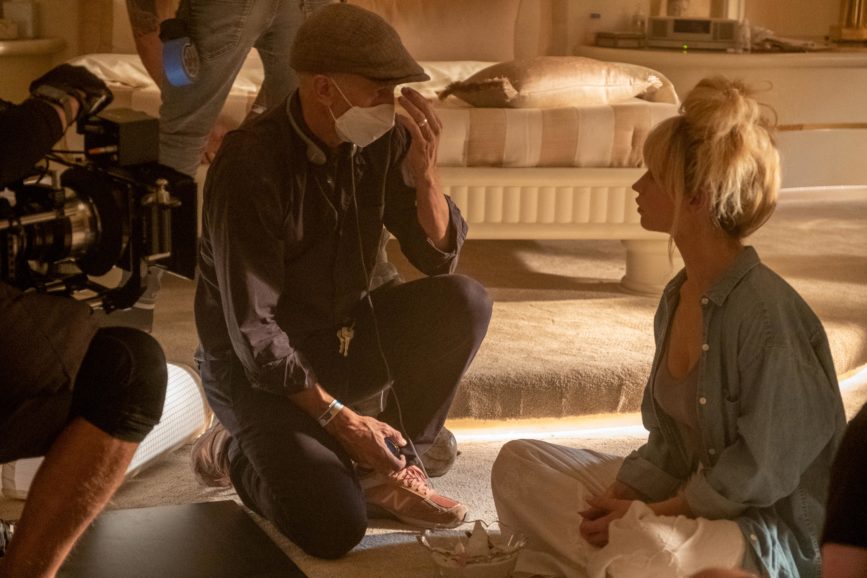
One of Huidobro’s favourite standby lighting fixtures was a covered wagon Estes and the lighting crew made with an Astera Helios Tube inside, acting as a soft source that could be quickly introduced when required. “Having lighting units that utilised battery power was also key for moving rapidly,” adds Estes.
For the mansion set, Mole 20k fresnels were used to create warm, soft light sources through the large windows. The night looks on stage were mostly lit by ARRI SkyPanels through windows or mounted in Space Light fixtures to create soft ambient lighting outside the sets.
Featured amongst Este’s favorite sets was Rand’s apartment which required a dark mood to be created to enhance the drama and despair in his life at that moment. “Paula and I wanted to work at very low light levels and try to make the set as depressing as possible to help tell his story,” says Estes.
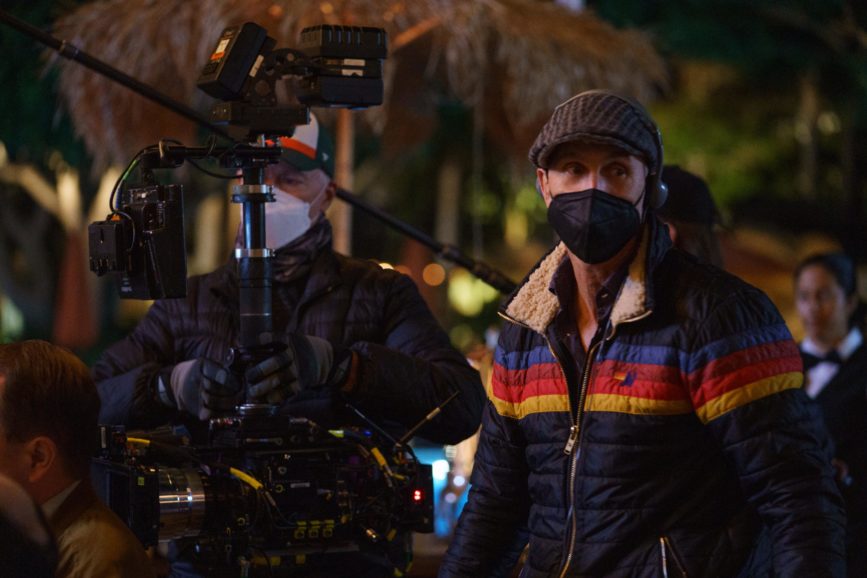
Once again, they relied heavily on LED tube sources with unbleached muslin diffusion to achieve a soft and warm lighting source and played with adding some plus green to the colour mix to give the apartment a dingy vibe.
Huidobro found the number of scenes shot on stage gave the crew the independence to not only move freely but create a variety of looks through the lighting, using subtle manipulations to enhance the mood or time of day. “Using the Soft Sun was exciting because it was a single source that could shine through the large window in Pam and Tommy’s mansion set and allow me to create a sharp, single shadow,” she says. “And when it came to the external scenes, the Valley and LA can be quite stark with a lot of bright sunlight, so we tried to embrace the harshness and ugliness to create an interesting image.”
The heavy reliance on Steadicam for creative camera movements presented a challenge when lighting scenes in a way that would allow for the camera to see large areas of the sets but not any lighting instruments. “We changed the colour of the light frequently and used many Astera Titan Tubes because the camera could see the whole room, meaning there was nowhere to hide fixtures,” says Huidobro. “So, we mostly put Tubes on the ceiling or used handheld lighting. It was a bit of a dance with the operator while an electrician followed the actors around.”
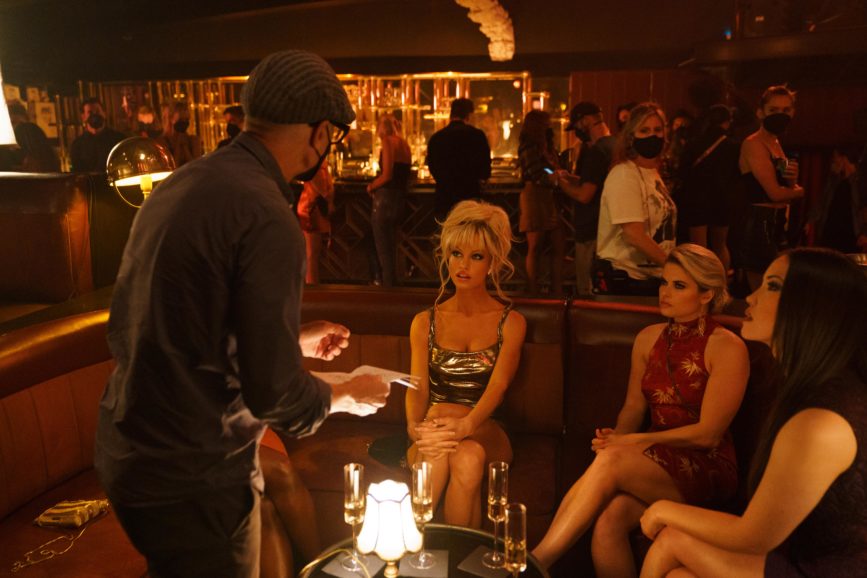
While the multiple locations used, preparation needed, and time restraints due to Lily James’s hair, makeup, and prosthetics were a challenge, the most demanding scene Estes lit was the sequence where Rand visits Miltie (Nick Offerman) at the porn studio to discuss the videotape. One shot saw the Steadicam follow Rand from the street through a maze of rooms and hallways, a set with piles of props, before landing on the set of a porn shoot which Miltie was directing.
“The sets were incredible and contained various set pieces which were fun to highlight,” says Estes. “The challenge was lighting the scene in a way that never impeded what the lens would see during the route. The shot turned out amazing and created an urgency and desperation as Rand tries to find a way to turn his discovery into a form of redemption.”
